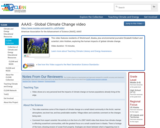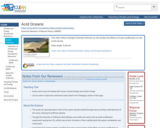
The National Climate Assessment assesses the science of climate change and its impacts across the United States, now and throughout this century. It documents climate change related impacts and responses for various sectors and regions, with the goal of better informing public and private decision-making at all levels.
- Subject:
- Atmospheric Science
- Physical Science
- Material Type:
- Reading
- Provider:
- United States Global Change Research Program
- Date Added:
- 01/01/2014



















